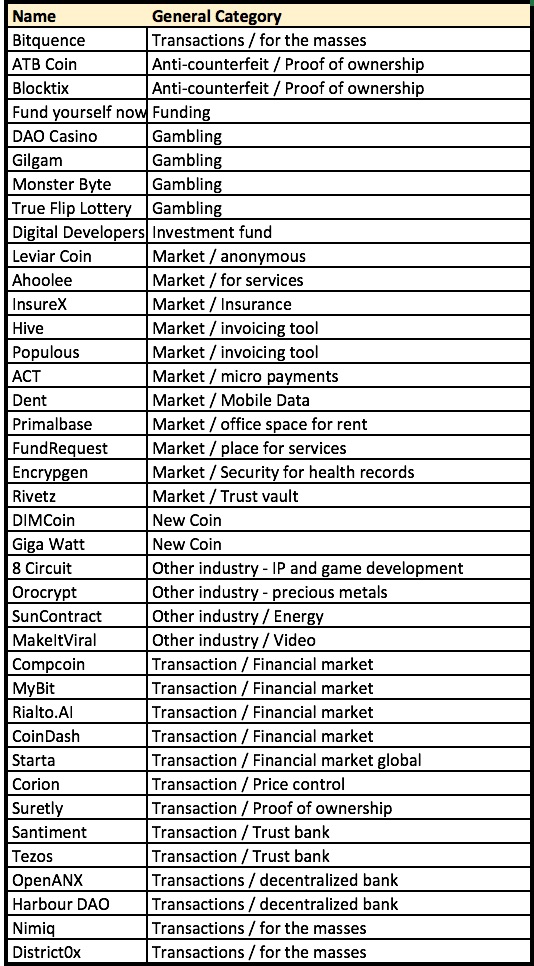July 10, 2017: 27 Active ICOs.
If you are trying to make sense of the Initial Coin Offering (ICO) universe – you are in good company.
There are multiple cryptocurrencies and exchanges and no shortage of articles talking about what an ICO is and why the market is so volatile and why ICOs are still raising hundreds of millions of dollars. Full disclosure – I am involved with the launch of one for http://authenticid.co , which is a pre-existing company that uses facial recognition for everything from fraud prevention to increased customer conversion rates (by making it faster and easier). More to come on what problem the AuthenticID ICO solves.
There are a handful of very helpful websites, especially Smith + Crown (https://www.smithandcrown.com) and TokenMarket (https://tokenmarket.net)
What I am finding in the ICO space is some pretty basic patterns – so I am starting this series of posts to help people sort out where, or if, they belong in this space. In this post I am going to cover some of the high level patterns I have observed, and in the next post I will get more into the “when is it time to ICO?” question.
Pattern 1 – There is a very broad array of experience / maturity levels in ICOs – so beware
If you go from the calendar on TokenMarket, there are 27 active ICOs and another dozen that are on the horizon, so I am using that group of 39 as my basis for this post. Every ICO has a white paper associated with it and most whitepapers appear to have been written hastily without a lot of experience with business and how to describe a need or an opportunity. Blocktix is an anti-counterfeiting model that does a good job, and Hive and Populous both do a good job of explaining that there’s an opportunity for a invoicing model that’s dedicated to cryptocurrencies. I was less clear about what ATB Coin and Gig Watt are about.
There’s already a lot of money in cryptocurrency – the really big holders are called “whales” – as they are in Las Vegas, and while some whales have gobbled up entire ICOs to create demand to ensure that they can unload their holdings – it seems clear that as ICOs become more popular – they need to have a very clear value proposition and offer a clear explanation of what their technology is – to instill confidence that they know what they are doing. Encrypgen is one that’s aimed at genomic data and it offers no implementation details. If they did get into the details, it would reveal that it makes little sense to use a distributed, many copy data base, for big data like genomes. It’s unlikely to hold the required volume of data. And, genomic data cannot be de-identified for resale.
Pattern 2 – There Are Themes in Problems/Opportunities
While there are some one-offs (Orocrypt is aimed at the precious metals world and seems to be trying to tie the world of cryptocurrencies to something like a gold standard), there are some pretty big patterns that make sense in terms of what people are selling in ICOs.
- 10% of them are focused on gambling in one form or another (DAO Casino, Gilgam, Monster Byte, and True Flip Lottery),
- 5% are aimed at created a new “coin” (DIM Coin and Giga Watt – I think).
- 33% (see graphic) are aimed at something transactional, whether it’s to help people sell their cryptocurrencies or make them accessible to the masses (Nimiq and District0x), or offer some sort of banking service (regulations on cryptocurrencies are nascent at best) that’s the biggest group
- 28% are aimed at creating some new marketplace for cryptocurrencies (Primalbase is offering office space paid for in cryptocurrency and Fundrequest seems a bit like a mechanical turk function paid for with cryptocurrency)
Pattern 3 – Every Week Is Different in Terms of Money
It’s still the wild, wild west out there when it comes to ICOs and while some are raising mountains of cash, others are not. It appears as there is some art to this, but it seems like there are some things that matter when it comes to a successful ICO:
- Problem statement. Solving a clear problem or addressing a specific opportunity – and being able to articulate it.
- Team. There needs to be a team that knows what they are doing.
- Technology. Technical description that highlights that they know “how” to win at what they are doing
- PR. This is a bit of a wild card, but it sounds like if you have the three bullets above and you shout it from the rooftops on Twitter, Reddit, LinkedIn and others, that makes a big difference.
Those are some initial findings and learnings. Send me your feedback and look for another post soon.

Leave a Reply